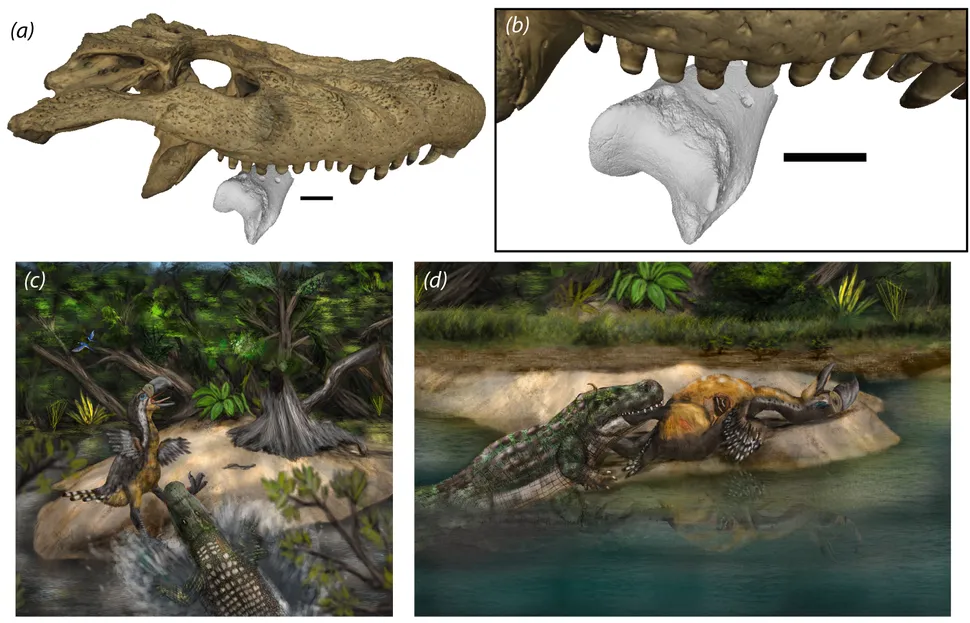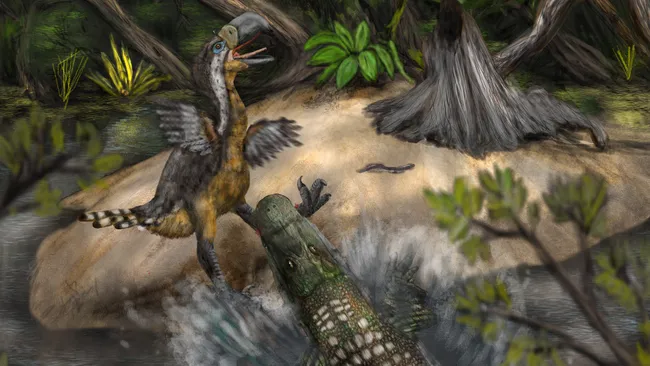Researchers have found evidence of a titanic tussle between a terror bird and a large caiman in Colombia’s ancient La Venta wetlands.
Terror Bird vs. Caiman: Ancient Bite Marks Reveal Prehistoric Predator Clash
About 12 million years ago, deep in what is now Colombia, a dramatic showdown may have unfolded between two prehistoric giants: a towering “terror bird” and a massive caiman lurking in the water.
A new study published July 22 in Biology Letters sheds light on this possible encounter, based on fossilized bite marks found on the leg bone of one of the largest known terror birds — a flightless, meat-eating species that once roamed South America.
Standing over 9 feet (2.7 meters) tall, this terror bird would have been a fearsome apex predator in its day. But even top predators have enemies. The fossil, discovered at the La Venta site in central Colombia, bears tooth marks that match the bite of a subadult Purussaurus neivensis — a prehistoric caiman that could eventually grow up to 33 feet (10 meters) long.
“We’ve learned that even apex predators like terror birds could become prey,” said Dr. Andrés Link, lead author and paleontologist at the University of the Andes, in an interview with Live Science. “Being at the top of the food chain doesn’t mean you’re always safe.”
Clash or Cleanup?
The fossilized leg bone shows four distinct tooth marks, and 3D analysis confirms there were no signs of healing, suggesting the attack occurred around or shortly before the bird’s death. The shape and spacing of the marks fit with a caiman about 15 feet (4.6 meters) in length.
Still, the research team cautions that this may not have been a violent ambush — it’s also possible that the bird died naturally and was later scavenged by the caiman.

Giant Predators of a Lost World
Purussaurus neivensis was a prehistoric giant, part of a group of ancient crocodylians that once dominated South America’s river systems. If the attacker was truly a juvenile, it’s staggering to consider the scale of a fully grown adult — which could have measured more than three times the length of the average modern crocodile.
The study adds a new dimension to our understanding of Miocene-era ecosystems and the dangers that even land-based predators faced near water.
“This gives us a glimpse into the ‘landscape of fear’ around ancient rivers in the proto-Amazon,” Link explained. “It highlights the complex ecological interactions in prehistoric South America.”
While we may never know for sure whether this was a fatal ambush or a case of post-mortem scavenging, the fossil offers a rare look at the violent and unpredictable lives of ancient megafauna.
